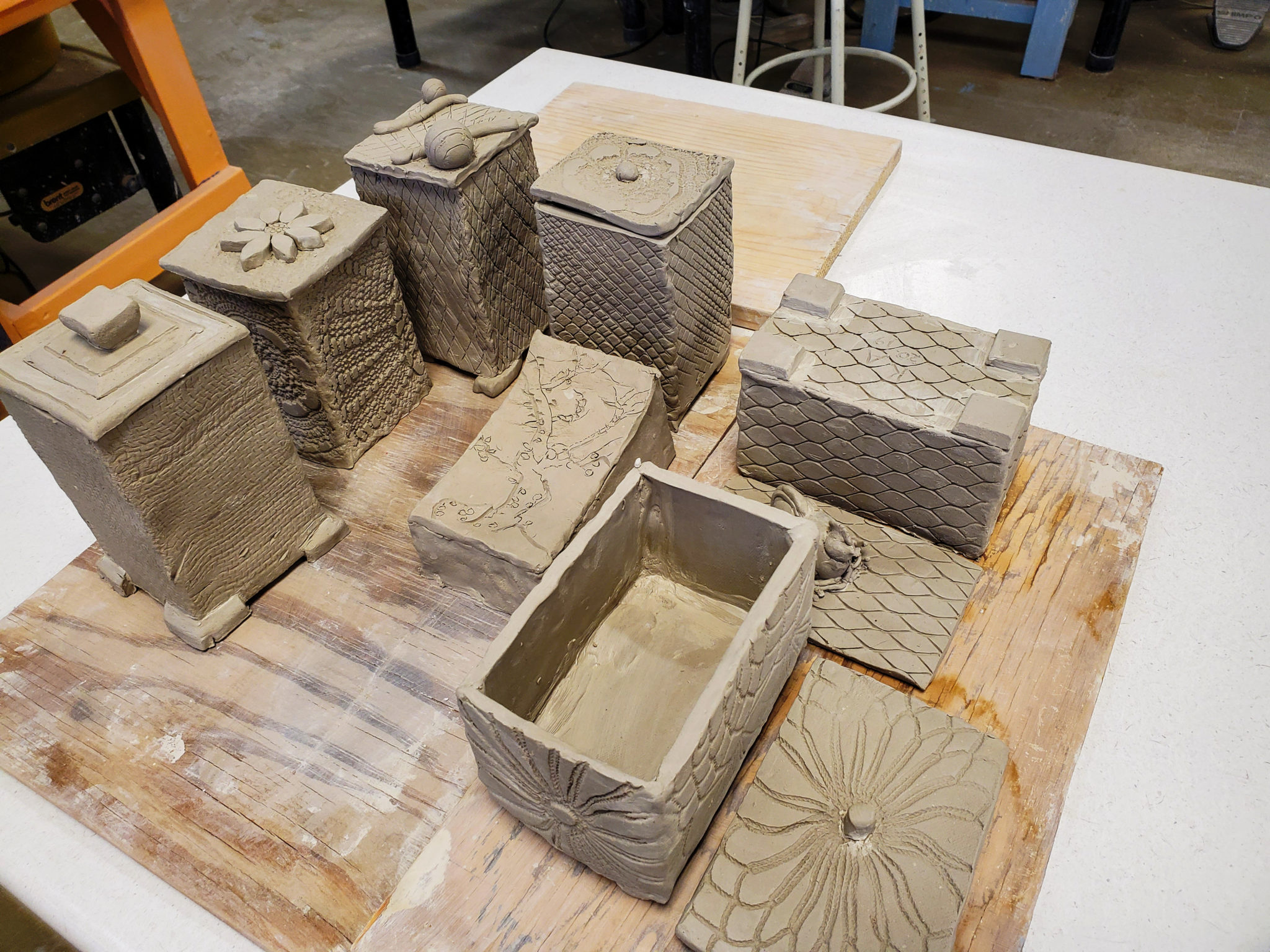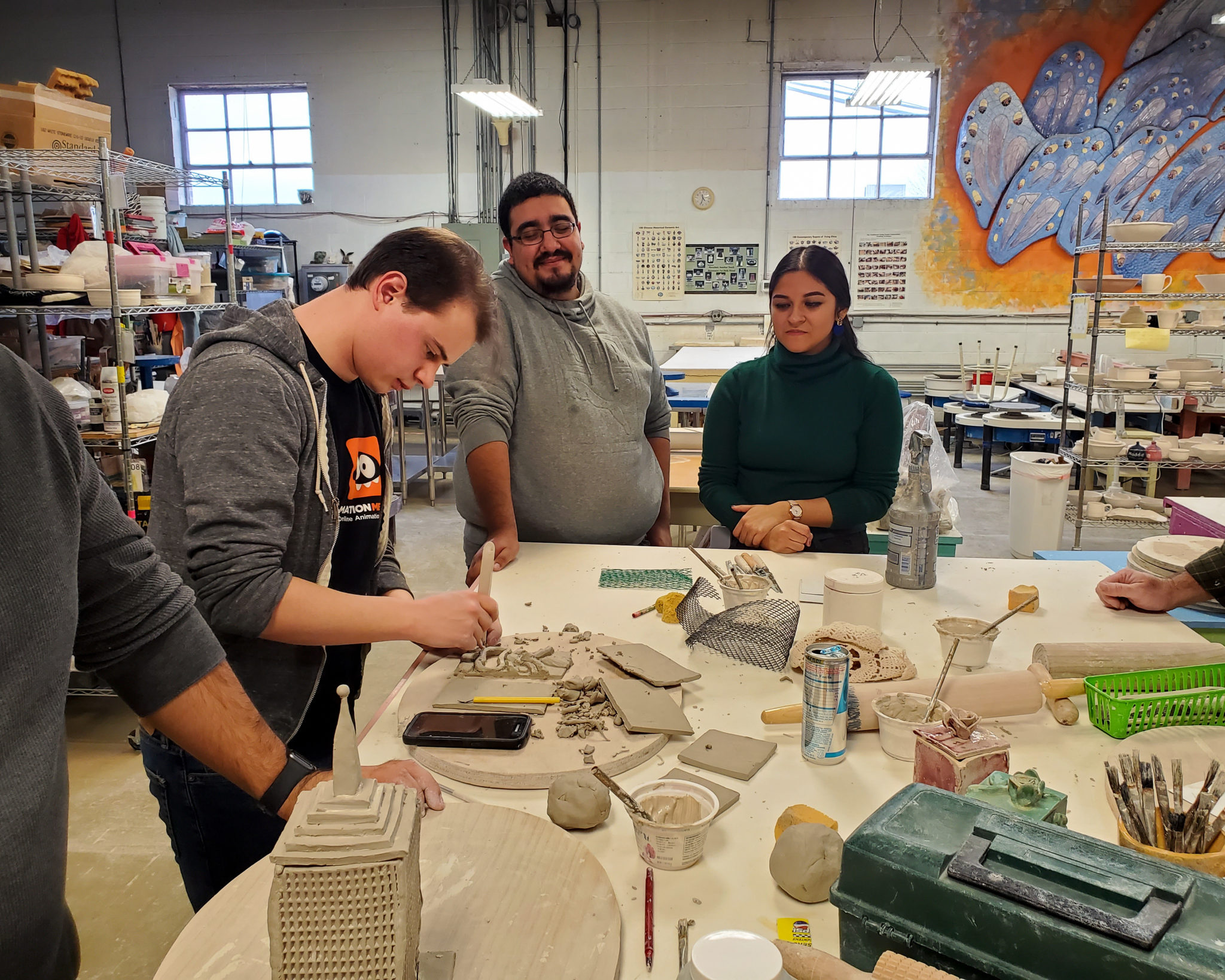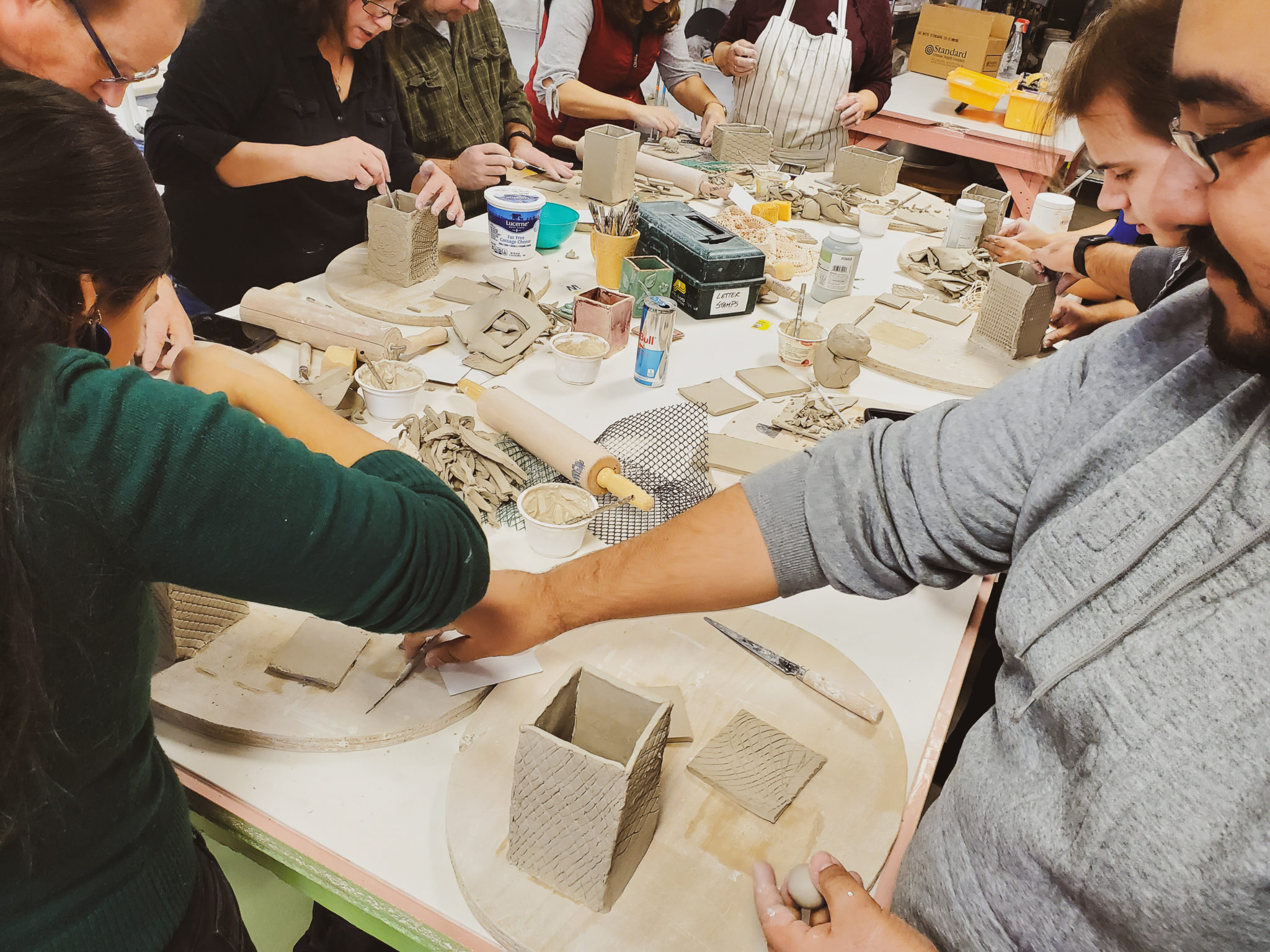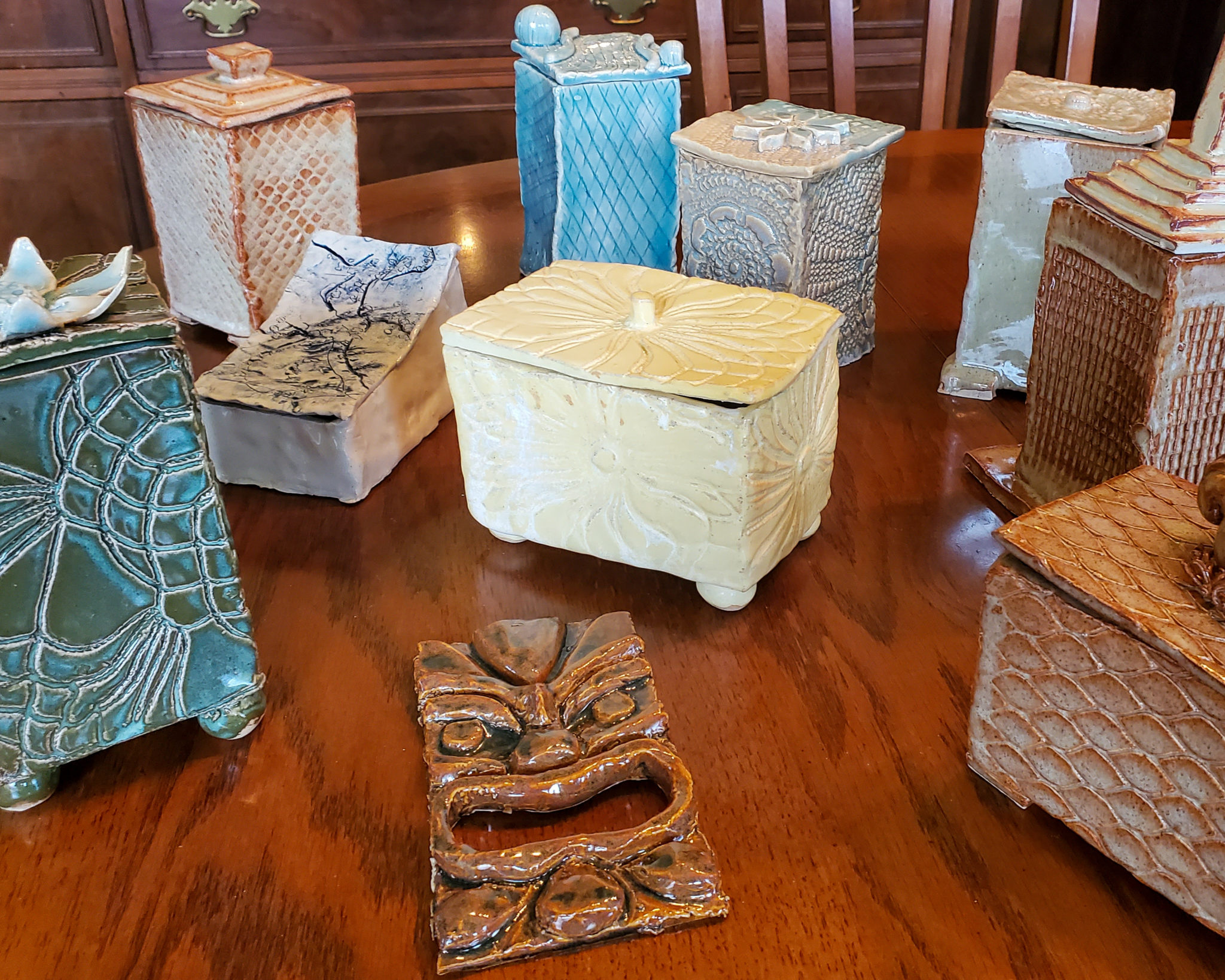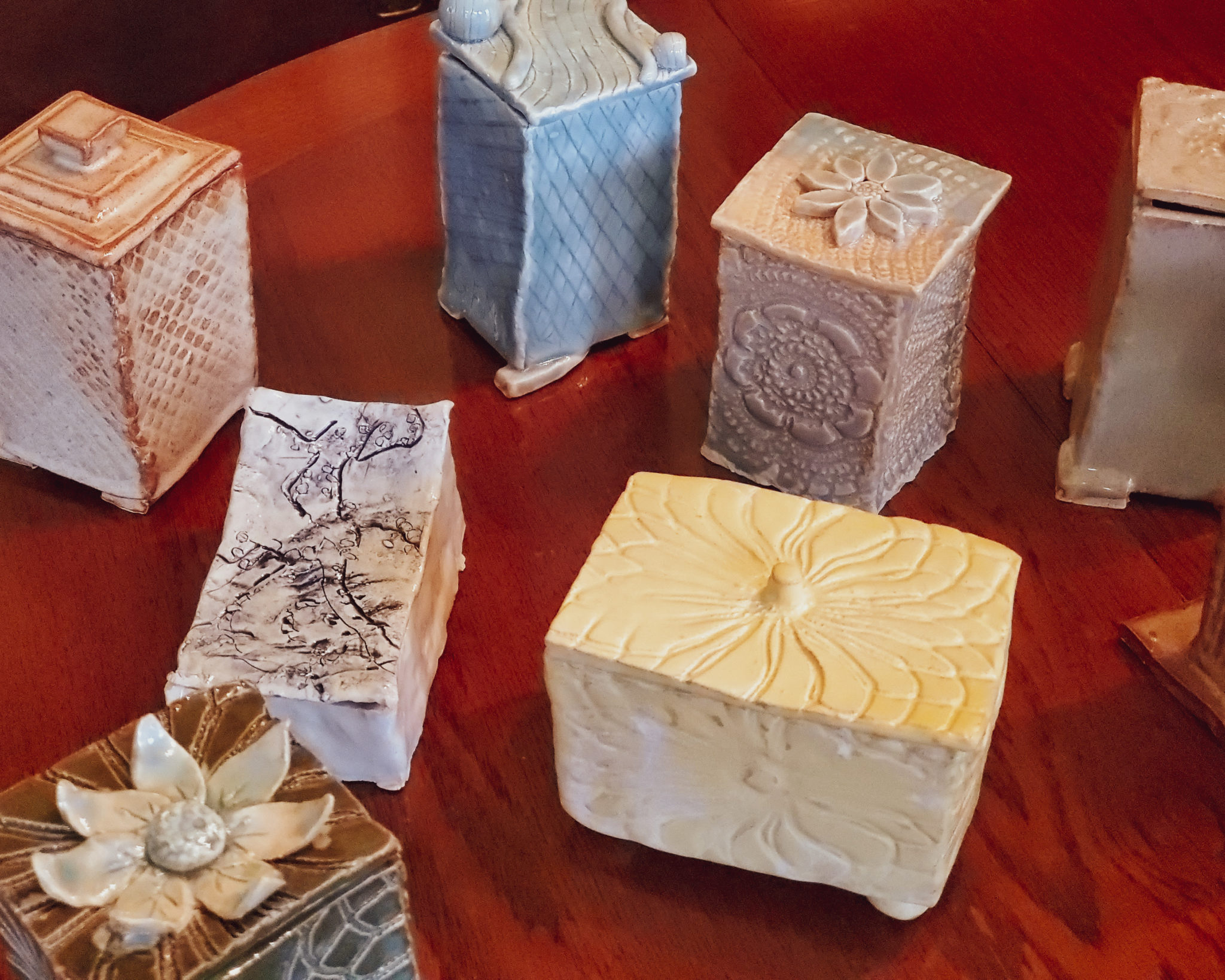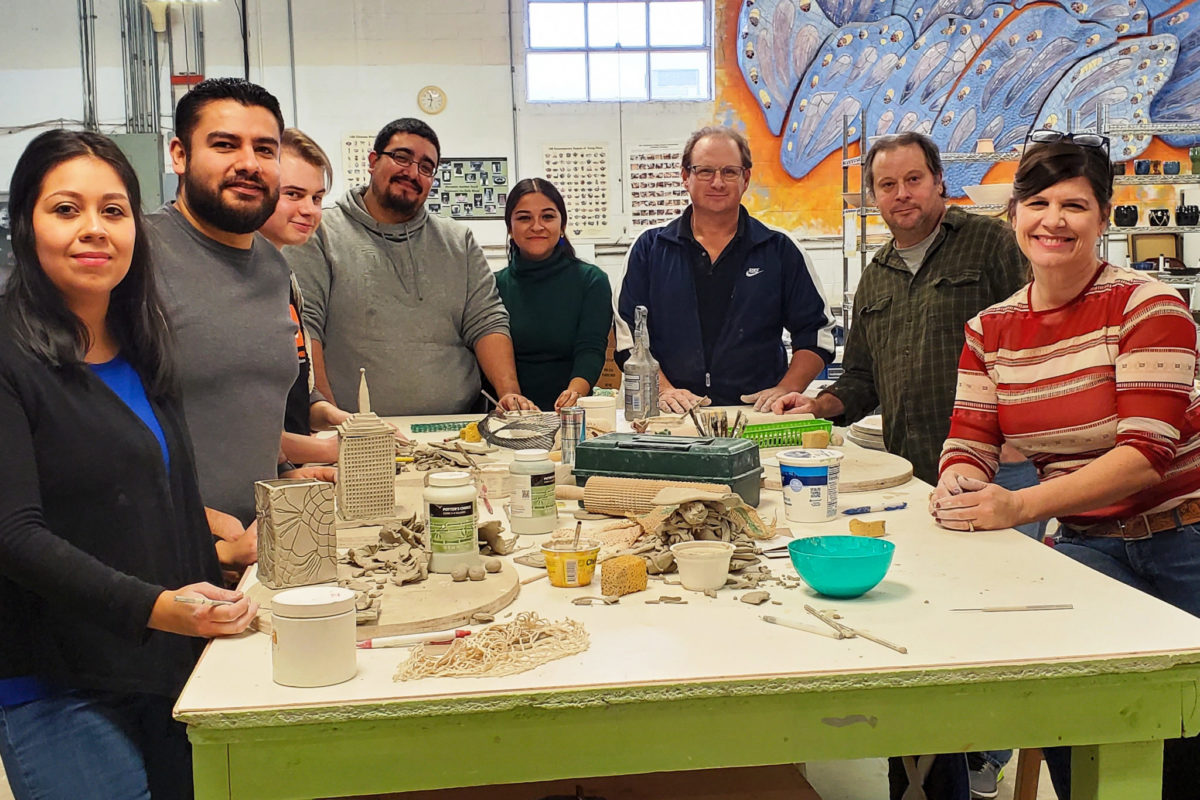
Home show addiction- what is design?
Let face it, there are a lot of you addicted to home design shows. Whether it’s a renovation, new build or just redecorating, everyone wants the latest and greatest when it comes to design. Technically as a designer I focus on a concept of elements that are used to define a space or structure. Then thru preparation of preliminary sketches I present….well you get the idea.
When the plans for our annual Christmas outing fell thru and the search began for something else, Sue stumbled upon an interesting art studio ClaySpace. This put a little spin on the thought of what “design” for an architect really means.
ClaySpace, a non-profit clay arts studio provides education and artistic programs to encourage the public to utilize their creative skills by “designing” and creating personal pieces of clay art. (Thanks Kate!)
At the end of our class one particular moment stood out.
When all the pieces were finished, each and every “design” of a box was different. Each piece was unique in its own right. Some were tall, short or long. Some had intricate designs, others were simpler. One piece never even became a box, just an oblong piece of art. Everyone had fun and as I side note, if you are looking for something different to do I recommend visiting their website at www.clayspace.net to set up a date to design.
This got me thinking. As an architect I am asked to “design” living and work spaces for my clients. Our experience at Clayspace showed just how differently people envision things. So what can an architect do to merge the thought process between themselves and the client? It begins with teamwork; a team comprised of the owner, the architect and the m
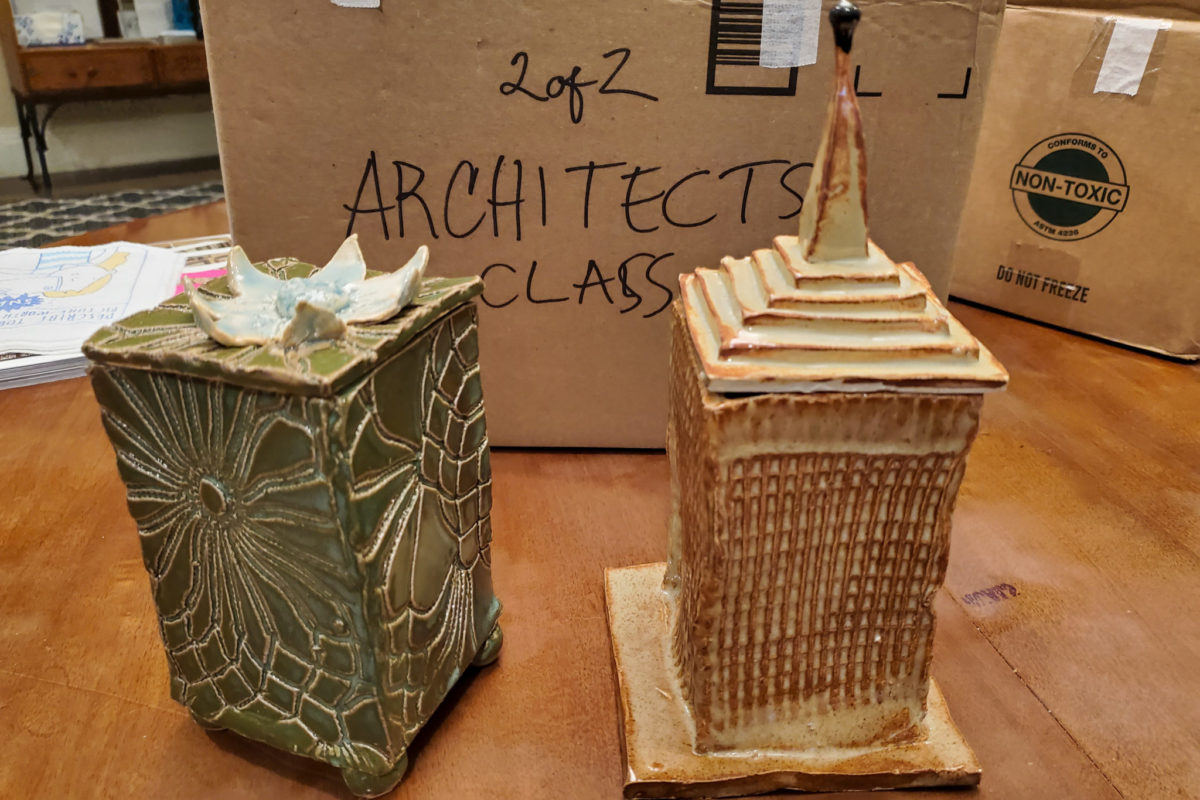
any other trades involved from the beginning to the end of the project. As the architect, the design process begins with a conversation.
A successful Architect draws out the information they need from the client beginning with a conversation. There are several key questions that can get the ball rolling. And key questions throughout the conversation to elicit even more information can give a clear insight into what the client is looking for.
The conversation can begin with something as simple as
“If you could have anything you want, what would that be and why do you want it?”
Determining the practicality of what the client wants and what is possible can make for a successful, on-time project completion goal. As the conversation continues, actively listening is an important quality for the architect.
“Why did you buy in this area?”
Determining what is important to the client can make the difference between success and failure. If the answer was for the schools, then a design thought process that includes their children is important.
“Was the commute to work a factor in the decision?”
Then a work office or other factors incorporating time may be important to the client.
“Are you interested in smart home technology?”
Then lighting options and cabinet or built in furniture should be developed.
In my experience, once a client starts talking they reveal so much of themselves and their life pattern that it becomes easier to understand what they are really looking for. I have even had several clients who came back to me and said they thought they knew what they wanted, but as we were talking realized that what they envisioned was totally different than what they really wanted. Many times clients have told me they were looking for something more traditional when what they envisioned was in fact more modern. I often refer to this process as discovering “What is your Red” .

Steve Jobs said “Design is not just what it looks like and feels like. Design is how it works.” And that is just as true in what an architect designs. Great architects listen during the conversation process to determine what really matters to the client and not just what the latest and greatest trend is. Great architects create a master plan to share their ideas with a great team to transform their client’s dreams into reality. And great architects ensure that their design works – for the team, for the environment, for the surroundings, and most importantly, for the client.

